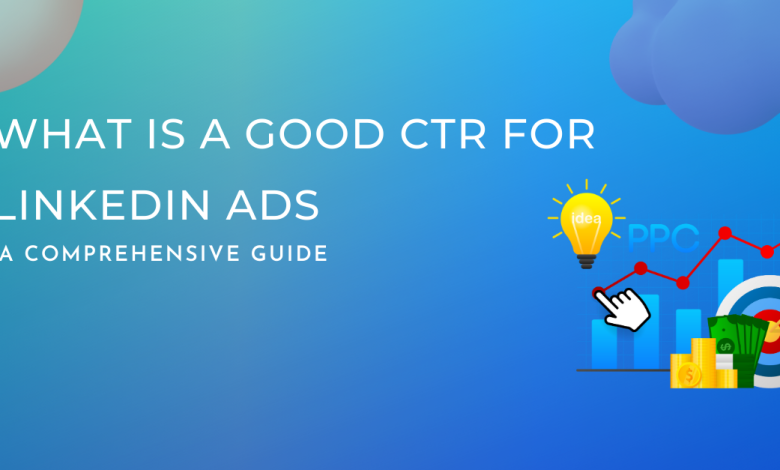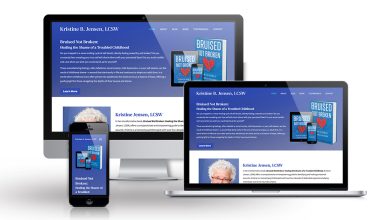What Is a Good CTR for LinkedIn Ads: Best Guide 2023

In the realm of digital advertising, Click-Through Rate (CTR) is a critical metric that determines the success of an ad campaign. LinkedIn, the professional social network, offers a unique platform for B2B marketing, and understanding the ideal CTR for LinkedIn Ads is crucial for advertisers looking to optimize their campaigns. The question, “What is a good CTR for LinkedIn Ads,” is a common one among marketers seeking to measure the effectiveness of their advertising efforts on this platform. In this comprehensive guide, we will explore the concept of CTR, factors that influence it on LinkedIn, and how to achieve a high CTR for your LinkedIn Ads.
If you’re looking for a professional SEO & Digital Marketing Service Provider company to bring your creative visions to life, check out Web Info Tech Ltd. They offer a wide range of Digital Marketing Support tailored to your needs
The Significance of CTR for LinkedIn Ads
Before we delve into the details, it’s important to understand the importance of CTR for LinkedIn Ads and why it matters to advertisers:
- Indicator of Engagement: CTR measures the engagement level of your ad. It shows the percentage of users who interacted with your ad by clicking on it. A higher CTR indicates that your ad resonates with the audience and encourages them to take action.
- Cost Efficiency: A high CTR often results in a lower Cost Per Click (CPC). When more users click on your ad, the cost per click decreases, making your advertising budget more cost-effective.
- Improved Ad Relevance: A high CTR suggests that your ad is relevant to the target audience. This not only increases the chances of achieving your campaign goals but also enhances your ad quality score.
- Higher Ad Visibility: LinkedIn’s ad platform rewards ads with higher CTR by providing them with more visibility. Ads with a better CTR are more likely to be displayed to a larger audience.
Now, let’s explore the factors that can influence CTR on LinkedIn:
Factors That Influence CTR for LinkedIn Ads
- Ad Relevance: The relevance of your ad to the target audience is a fundamental factor. Your ad should resonate with the needs, interests, and pain points of your audience. Well-targeted ads are more likely to have a higher CTR.
- Ad Copy: The quality and clarity of your ad copy play a significant role in CTR. Use concise, compelling language that conveys your message effectively. Highlight the value proposition and benefits of your offering.
- Visual Appeal: Visual elements, including images and video, can grab users’ attention and entice them to click. Ensure that your visuals are of high quality and complement your ad’s message.
- Call-to-Action (CTA): A strong and clear CTA encourages users to take action. Use action-oriented phrases like “Learn More,” “Sign Up,” or “Request a Demo” to guide users on what to do next.
- Ad Placement: The position of your ad on the LinkedIn platform can impact CTR. Ads placed in prime positions on the page tend to receive more clicks. These placements are often more expensive, but the higher CTR can justify the investment.
- Targeting: The precision of your ad targeting is critical. LinkedIn offers detailed targeting options based on job titles, industries, seniority, and more. Ensure your ads are displayed to the most relevant audience to maximize CTR.
- Ad Format: LinkedIn offers various ad formats, including Sponsored Content, Sponsored InMail, and Display Ads. The format you choose should align with your campaign objectives and audience preferences.
- Ad Frequency: The frequency at which users see your ad can impact CTR. High ad frequency can lead to ad fatigue, resulting in a lower CTR. Monitor frequency and adjust your campaign to avoid oversaturation.
- Ad Testing: Regularly testing different ad elements, such as headlines, ad copy, visuals, and CTAs, can help identify what resonates best with your audience and improve CTR over time.
What Is a Good CTR for LinkedIn Ads?
The ideal CTR for LinkedIn Ads can vary depending on factors like industry, audience, and ad type. However, as a general guideline, a good CTR for LinkedIn Ads typically falls within the range of 0.5% to 2%. A CTR higher than 2% is considered excellent, while a CTR lower than 0.5% may indicate room for improvement.
It’s important to note that CTR is just one of many metrics to consider when evaluating the success of your LinkedIn Ads. The overall performance of your campaign, including conversions, lead generation, and ROI, should be taken into account alongside CTR to gauge the effectiveness of your advertising efforts.
Tips to Achieve a High CTR for LinkedIn Ads
To achieve a high CTR for your LinkedIn Ads, consider implementing the following strategies:
- Audience Segmentation: Divide your target audience into segments and create highly relevant ads for each segment. This increases the chances of capturing their interest.
- Compelling Headlines: Craft attention-grabbing headlines that clearly communicate the value of your offering. A strong headline can significantly impact CTR.
- Use Visuals Wisely: Visuals should complement your ad’s message. A/B test different images and videos to identify which ones resonate best with your audience.
- A/B Testing: Continuously test different ad elements to refine your campaigns. Experiment with ad copy, visuals, CTAs, and targeting options to identify the winning combinations.
- Optimize Landing Pages: Ensure that the landing pages users are directed to are consistent with your ad’s message and provide a seamless user experience. A disjointed experience can lead to a drop in CTR.
- Ad Schedule: Analyze when your target audience is most active on LinkedIn and schedule your ads accordingly to maximize visibility.
- Ad Positioning: Consider ad positioning options based on your campaign goals. For instance, sponsored content may be more effective for brand awareness, while sponsored InMail may be ideal for lead generation.
Final Thought
A good CTR for LinkedIn Ads is a key indicator of the effectiveness of your advertising campaigns. By focusing on ad relevance, compelling ad copy, and strategic targeting, you can achieve a high CTR, which, in turn, can lead to lower CPC and increased ROI.









